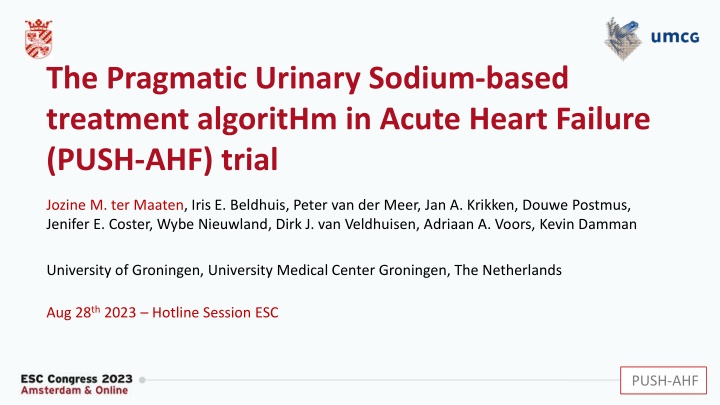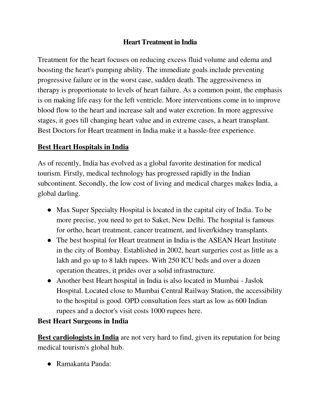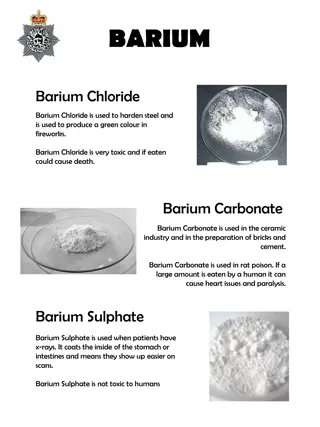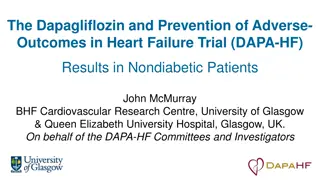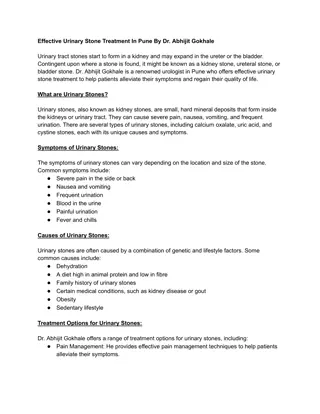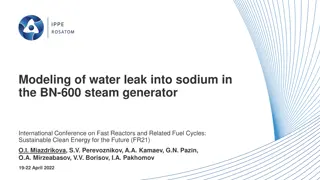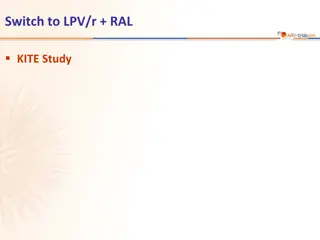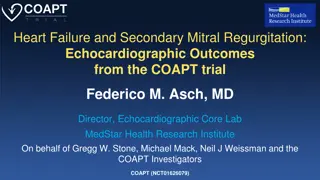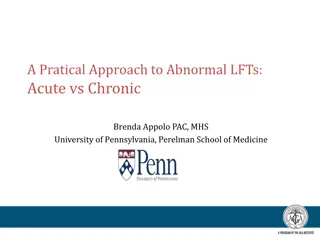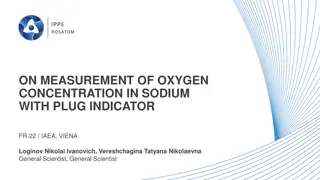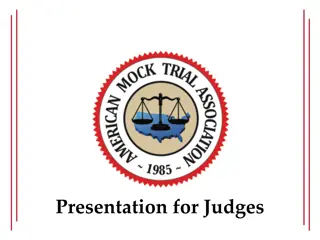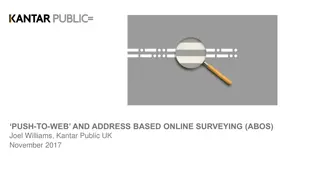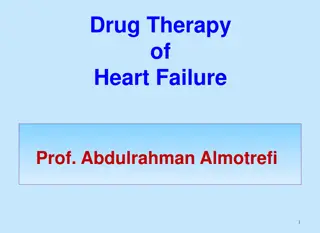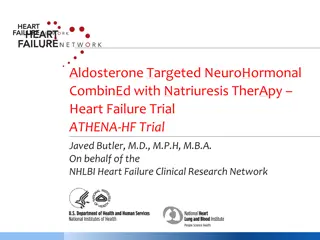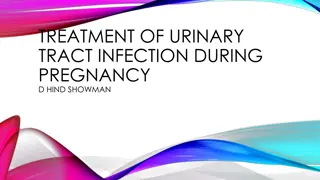Pragmatic Urinary Sodium-Based Treatment Algorithm in Acute Heart Failure (PUSH-AHF) Trial Overview
The PUSH-AHF trial, conducted at the University Medical Center Groningen, aimed to evaluate the effectiveness and safety of natriuresis-guided diuretic therapy in acute heart failure. The study design was pragmatic, prospective, single-center, open-label, randomized, and controlled. Key outcomes included 24-hour natriuresis, 180-day all-cause mortality, heart failure hospitalization, and safety events. The trial emphasized the need for personalized approaches in decongestion therapy for better patient outcomes.
Download Presentation

Please find below an Image/Link to download the presentation.
The content on the website is provided AS IS for your information and personal use only. It may not be sold, licensed, or shared on other websites without obtaining consent from the author.If you encounter any issues during the download, it is possible that the publisher has removed the file from their server.
You are allowed to download the files provided on this website for personal or commercial use, subject to the condition that they are used lawfully. All files are the property of their respective owners.
The content on the website is provided AS IS for your information and personal use only. It may not be sold, licensed, or shared on other websites without obtaining consent from the author.
E N D
Presentation Transcript
The Pragmatic Urinary Sodium-based treatment algoritHm in Acute Heart Failure (PUSH-AHF) trial Jozine M. ter Maaten, Iris E. Beldhuis, Peter van der Meer, Jan A. Krikken, Douwe Postmus, Jenifer E. Coster, Wybe Nieuwland, Dirk J. van Veldhuisen, Adriaan A. Voors, Kevin Damman University of Groningen, University Medical Center Groningen, The Netherlands Aug 28th2023 Hotline Session ESC PUSH-AHF
Disclosures Investigator initiated trial funded by the Netherlands Heart Foundation No industry funding PUSH-AHF
Background In acute heart failure, treatment of congestion with loop diuretics has remained unchanged over the last 50 years. Adequate and quick congestion relief remains difficult and this one-size-fits-all approach falls short in a great number of patients A personalized treatment approach is urgently needed to improve effective decongestion Urinary sodium (natriuresis) has been suggested as a potential marker to guide diuretic therapy and has already been incorporated in the ESC HF guidelines PUSH-AHF
Aim and design of the trial The PUSH-AHF trial aimed to investigate the effectiveness and safety of natriuresis guided diuretic therapy in acute heart failure Pragmatic, prospective, single-center, open-label, randomized, controlled clinical trial Investigator initiated Enrolment between February 2021 and November 2022 180-days follow-up (by telephone call) PUSH-AHF
PUSH-AHF study design PUSH-AHF
Statistical methods & outcomes The study was powered for a dual primary endpoint (both P<0.025) 24-hours natriuresis 180-day all-cause mortality and adjudicated heart failure hospitalization Key secondary endpoints: 48-hour natriuresis, 24- and 48-hour diuresis, length of stay, heart failure rehospitalizations, all-cause mortality, percentage change in NT-proBNP at 48- and 72-hours Safety endpoints: cardiac and renal safety events PUSH-AHF
Study flow chart PUSH-AHF
Results clinical characteristics Natriuresis guided therapy (n=150) Standard of Care (n=160) Demographics Age (years) Sex (n (%) female) Race (n (%) white) Physical examination at presentation Rales (n (%)) Ascites (n (%)) Edema (n (%)) Orthopnea (n (%)) NYHA Class (n (%)) 74 [66-82] 61 (41%) 142 (96%) 74 [65-81.2] 77 (48%) 155 (98%) 108 (73%) 12 (12%) 99 (68%) 85 (67%) 109 (71%) 16 (17%) 103 (67%) 88 (72%) II III IV 5 (3%) 39 (26%) 106 (71%) 11 (7%) 29 (18%) 120 (75%)
Results clinical characteristics Natriuresis guided therapy (n=150) Standard of Care (n=160) Heart failure LVEF (%) HFpEF (n (%)) New-onset heart failure (n (%)) Ischemic etiology (n (%)) Laboratory values at baseline eGFR (ml/min/1.73m2) NT-proBNP (ng/L) Treatment before admission ACEi/ARB/ARNI (n (%)) Beta-blocker (n (%)) MRA (n (%)) SGLT2i (n (%)) Home loop diuretic (n (%)) Home loop diuretic dose (mg of bumetanide equivalents) 35 [25-53] 30 (26%) 66 (44%) 56 (37%) 38 [28-48] 21 (18%) 69 (43%) 55 (34%) 54 [35-72] 4390 [2554-8226] 53 [34.8-73.2] 4947 [2607-9809] 82 (55%) 100 (67%) 53 (35%) 8 (5%) 84 (56%) 2 [1-4] 87 (54%) 115 (72%) 54 (34%) 12 (8%) 93 (58%) 2 [1-4]
Results - treatment Median starting dose in both groups was 2 [1-4] mg of bumetanide bid (furosemide equivalent dose of 80 [40-160] mg) PUSH-AHF
1st primary endpoint 24-hours natriuresis Estimated difference: 63 (95% CI: 18-109) mmol urinary sodium PUSH-AHF
2nd primary endpoint 180-day all-cause mortality and adjudicated HF rehospitalization Significant difference in inhospital death (P=0.0192) Natriuresis guided therapy: 1.4% (n=2) Standard of care: 7.5% (n=14) PUSH-AHF
Results secondary endpoints Diuresis Natriuresis
Results other secondary endpoints Natriuresis guided therapy Standard of care P-value Length of hospital stay (days) Heart failure rehospitalization (%(n)) 6 [5-9] 17 (25) 7 [5-10] 17 (26) 0.1436 0.8904 180-day all-cause mortality (%(n)) Percentage change in NT-proBNP (%) 19 (29) 21 (33) 0.6369 At 48 hours At 72 hours -22 [-48-12] -33 [-61-0] -18 [-41-17] -33 [-58-8] 0.4351 0.7881 PUSH-AHF
Results safety endpoints Natriuresis guided therapy Standard of care P-value Safety endpoints Serious adverse events (%(n)) Adverse events (%(n)) Renal safety events Doubling of serum creatinine at 24 hours from baseline (%(n)) Doubling of serum creatinine at 48 hours from baseline (%(n)) Prespecified AE s Worsening heart failure (%(n)) True worsening renal function (%(n)) 40 (60) 57 (86) 44 (70) 60 (96) 0.5799 0.7180 0 (0) 1 (1) 1.0000 1 (1) 1 (2) 1.0000 6 (9) 1 (1) 9 (15) 1 (2) 0.3689 1.0000 PUSH-AHF
Strengths and limitations Single center study in the Netherlands Open label design Natriuresis values in the standard of care group were blinded Heart failure rehospitalizations were adjudicated Primary endpoint analyses were performed by an independent statistician Pragmatic trial Incorporation in the electronic health record Swift enrollment of a generalizable, all-comer, acute heart failure population PUSH-AHF
Conclusions The PUSH-AHF trial showed that natriuresis-guided diuretic therapy improved natriuresis and diuresis in patients with acute heart failure without affecting 180-day outcomes Natriuresis-guided therapy was safe as it did not increase renal and cardiac events PUSH-AHF
Clinical implications The results of the PUSH-AHF trial are directly implementable as spot urinary sodium values are easy to obtain, inexpensive and widely available, as are the medications used in the treatment algorithm Our results underscore the use of repeated spot urinary sodium assessments for personalized treatment targets as proposed by the ESC HF guidelines PUSH-AHF
Acknowledgements Co-primary investigator: K. Damman Steering committee: P. van der Meer, I.E. Beldhuis, J.A. Krikken, J.E. Coster, W. Nieuwland, D.J. van Veldhuisen, and A.A. Voors Independent statistician: D. Postmus We thank the patients, physicians, nurses, and monitor involved in the trial PUSH-AHF
Now online in Nature Medicine j.m.ter.maaten@umcg.nl
